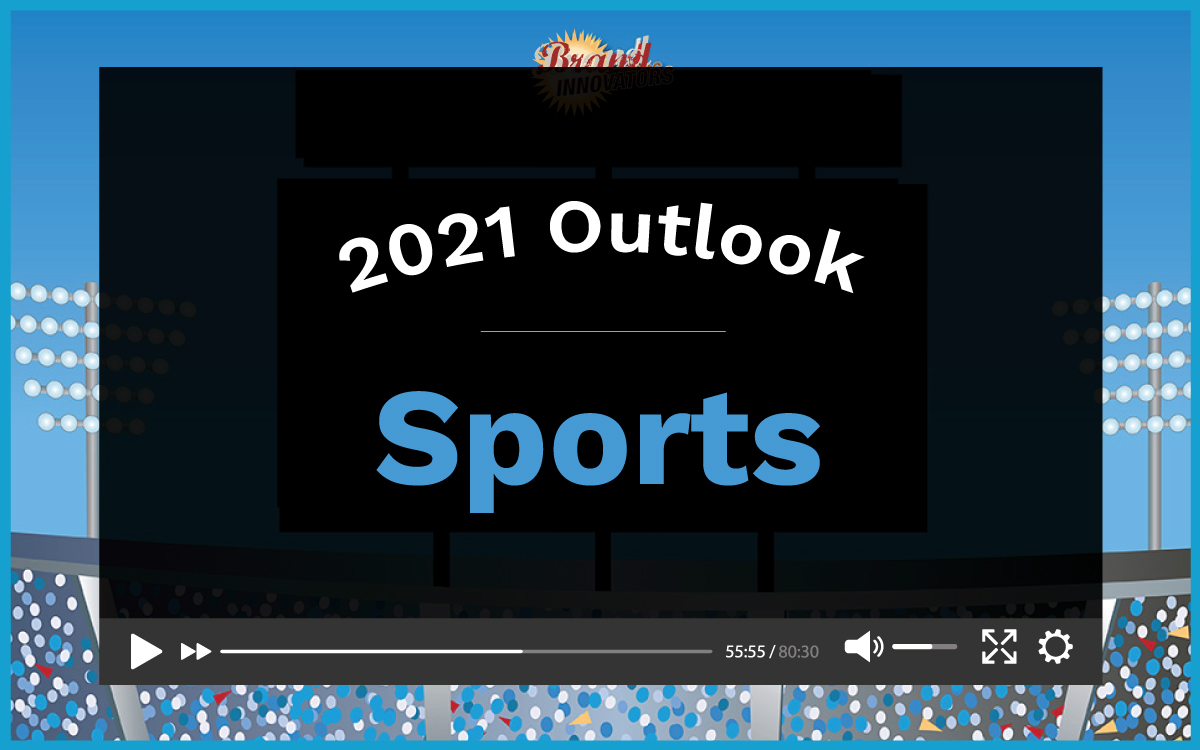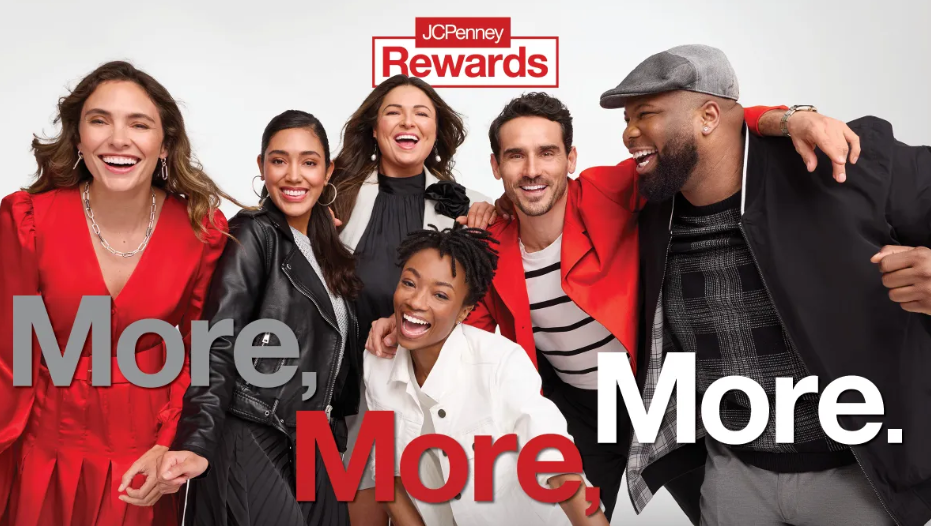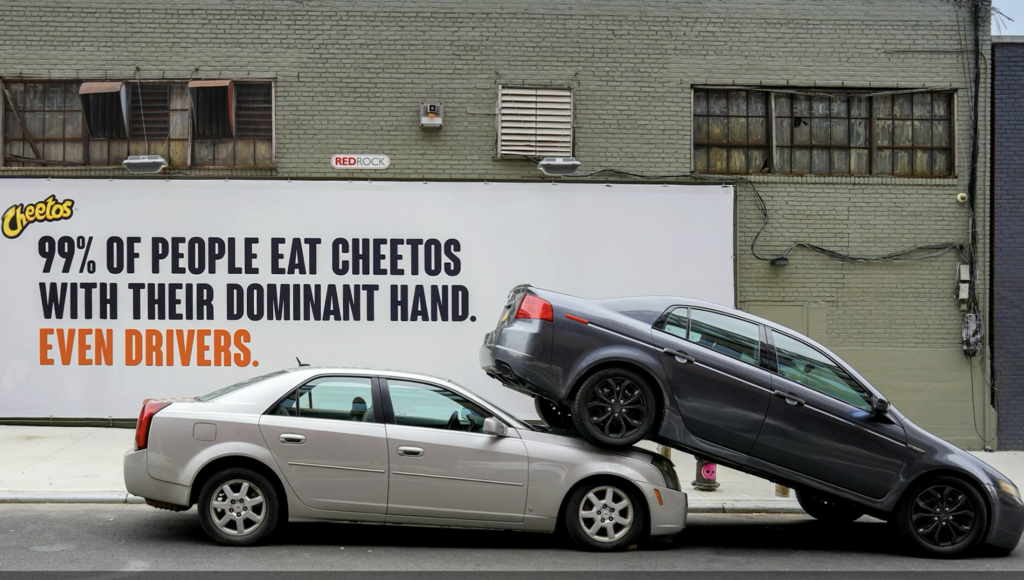In the sixth installment of our new 2021 Outlook Series, Brand Innovators talks to CMOs and marketing leaders for insights into what to expect next year in sports marketing. This week, Brand Innovators kicks off our new series of Sports Marketing Upfronts, a two-day virtual event, and the first of an eight-part series, which debuts November 12th and 13th, as part of our Livecast programming.
Sports marketing has been turned on its head this year as major sporting events from March Madness to the Olympics have been cancelled, while others resumed with limited schedules and games were played to crowd-free stadiums.
As we look ahead to 2021, the pandemic continues to spread and the outlook for if and when in-person sporting can resume remains foggy. “There won’t be a return to ‘normal’ sports in 2021,” says Justin Toman, Head of Sports Marketing at PepsiCo. “I think it’ll be a two steps forward, one step back journey towards a new normal, which in many ways…in stadium procedures, content and media consumption, the sponsorship value equation…will be significantly different than before.”
The global spectator sports market is estimated to drop from $144.2 billion in 2019 to $139.5 billion in 2020, per ResearchandMarkets.com. For brands, the uncertainty means rewriting what sports marketing means. Even as leagues struggle to bring back games to fans and appeal to their pent up demand, canceled games and COVID-positive players seem to keep the situation from stabilizing any time soon.
“The leagues and conferences appear to be doing everything they can to get back to their traditional sports calendars and fans in their venues,” says Matthew Coleman, Marketing Director at State Farm. “However, COVID cases are on the rise across most of the U.S., which will make it difficult for them to do so. Leagues and conferences will continue to be challenged with the volatility COVID brings. Brands should apply what they’ve learned from the first wave of the virus to ensure that they have the necessary flexibility in their contracts and budgets to account for any material changes.”
If 2020 taught us anything, it is that teams and leagues will have to be creative in order to keep sports alive. Heidi Browning, EVP-CMO at The National Hockey League (NHL) says that “agility is first and foremost.”
“We’ve been agile marketers through at least the last decade, and now we have to be agile business people,” says Browning. “Certainly we developed some new muscles on that, this last season from the pause all the way through Stanley Cup, so as we look at our leaning front this season and take in as much information possible to evaluate what the best approach is to moving forward that’s how we’ll develop our strategy and make decisions and optimize if necessary.”
With fans watching from home, the league has been focused on enhancing the home viewing experience as consumers upgrade devices.
“Innovation will continue to be the connective tissue through all of this, we have these arenas that are all touchless to transform the fan experience, but we also will continue to double down on the innovations around that fan experience – the camera angles, AR, VR, the sights, the sounds – to bring that in-person experience into your living room,” Browning continues.
Sporting events command serious ad spend as major brands look to reach the large audiences that tune in. In 2021, advertisers will likely be testing different channels in order to connect with fans.
“I expect team and league partners to use the early part of 2021 to test new in-stadium, at-home, and digital innovations that can be complement the true return of fans in stands in what we all hope to be the second half of 2021,” says Nick Kelly, Vice President, Partnerships, Beer Culture & Community at Anheuser–Busch.
Digital will play a key role as players, teams, leagues and brands alike look to connect with the ever-more connected consumer across screens as they view from home.
“We saw everyone from leagues, brands, teams, and individual athletes make so many creative, cultural, and fan-focused pivots in order to make the most of an unusual year,” says Shiz Suzuki, AVP, Sponsorships and Experiential Marketing, AT&T. “I think we can expect to see that carried over into 2021 and beyond. We also witnessed an accelerated adoption of technology and digital experiences within the sports industry — which is exciting as we think about AT&T 5G and Fiber and how they naturally integrate and power fan’s in-arena or virtual, at-home experience.”
Brands will also have to rethink the value of advertising as legacy models will likely not apply in this new era.
“The saying ‘necessity is king’ has never been as true,” says Kieran Foley, Head of Partnerships, Brand and Strategy at Danone. “Organizations need to start thinking about broadening their ability to strategically partner with some brands/producers. Forsake short term financial gain for longer term survival by ensuring you remain relevant and top of mind with consumers by leveraging these partners, while not adding costs. Using your valuable IP to attract partners, but take a contra payment in what they can offer you in reach and marketability rather than a solid dollar amount. Harder to appreciate in tougher times I know, but it is the best way to stay alive and fight another day. It attracts more eyeballs, more partners, more value in the long run.”
“The necessary programming being driven across how we interact with consumers through the sports teams with various brands, can lead to potential new lines of commercial programming between the two bodies,” Foley continues. “It can potentially widen how we interact with a wider diversity of consumers. It can eventually help us understand how we pivot to a newer way of marketing and commercializing sport as the once tried and trusted match boards around the field were the original programming centerpiece for a brand (and look at how that model has now changed!).”




